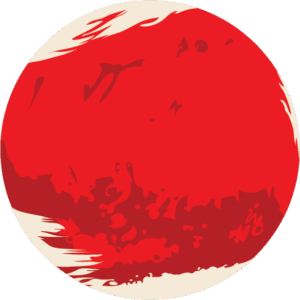The Downlink • May 26, 2023
Way out there
Space Snapshot

At the foot of a range of ice mountains, the Sputnik Planitia region of Pluto has a network of ridges that scientists think may be dunes created by winds in Pluto’s thin atmosphere. The material that makes up these dunes isn’t sand like we have on Earth; it’s tiny particles of methane ice. The New Horizons spacecraft, which flew by Pluto in 2015, captured images like this one that continue to yield new discoveries about the distant world. Image credit: NASA.
You love space, now take action
This weekly newsletter is your toolkit to learn more about space, share information with your friends and family, and take direct action to support exploration. Anyone can subscribe at planetary.org/connect to receive it as a weekly email.
Fact Worth Sharing

Because of the New Horizons mission, we now know more about the surface of Pluto than the surface of Venus, even though the latter is billions of miles closer to home. NASA’s VERITAS mission, which is facing crippling budget cuts, would change that.
Mission Briefings


Scientists have discovered a polar cyclone on Uranus. Radio waves coming from the distant ice giant showed a swirling vortex at its north pole, seen here as a light-colored dot to the right of center in each image of the planet. The three images were collected in 2015, 2021, and 2022 by the radio antenna dishes of the Very Large Array in New Mexico. This tells scientists that Uranus, like all other planets with substantial atmospheres in our Solar System, has cyclones at each of its poles. Image credit: NASA/JPL-Caltech/VLA.

NASA has chosen Blue Origin as the second lunar lander provider for the Artemis program. The company’s Blue Moon lander will need to be able to dock with the Lunar Gateway station and deliver crew members to and from the lunar surface. Blue Origin will test its lander in an uncrewed mission to the lunar surface, and then will have the opportunity to carry astronauts on the Artemis V mission, currently planned for 2029. SpaceX, which is providing the other lunar lander, is contracted to carry astronauts on its Starship lander in the Artemis III and IV missions.
From The Planetary Society


A far-out world has been discovered that is mystifying researchers. The TESS exoplanet-hunting spacecraft spotted a planet about the size of Jupiter orbiting extremely close to a star only about 40% the mass of our Sun. A planet like this defies our understanding of planetary formation since normally nothing so large could form around such a small star. Shubham Kanodia, the lead on a paper about the so-called “forbidden planet,” joins this week’s Planetary Radio to talk about the strange, distant world and what we’re learning about it. Pictured: An artist’s conception of TOI-5205b passing in front of its host star. Image credit: Katherine Cain/Carnegie Institution for Science.

There’s more than one way to knock an asteroid off a collision course. Learn about the five asteroid deflection methods — kinetic impactors, gravity tractors, laser abrasion, ion beam shepherds, and nuclear blasts — how well they might work, and what else needs to be done to save the Earth from impacts.
What's Up

The evening and morning skies are plentiful with planets. After sunset look for super-bright Venus high in the west, with Mars looking dimmer and reddish nearby. Before dawn you can spot Mercury near the eastern horizon, reaching its highest point on May 29. Jupiter shines bright above it, with yellowish Saturn higher in the sky. Learn more at planetary.org/night-sky.
Wow of the Week

We don’t get many chances to see distant worlds up close, but even a brief glimpse can be enough. Pluto’s moon Charon, depicted here by the artist fittingly named Ken Charon, was imaged during a short window of time when New Horizons flew past the system in 2015. But the images captured by the spacecraft are enough to inform and inspire artists to create beautiful works like this. Image credit: Ken Charon.
Send us your artwork!
We love to feature space artwork in the Downlink. If you create any kind of space-related art, we invite you to send it to us by replying to any Downlink email or writing to [email protected]. Please let us know in your email if you’re a Planetary Society member!


 Explore Worlds
Explore Worlds Find Life
Find Life Defend Earth
Defend Earth

